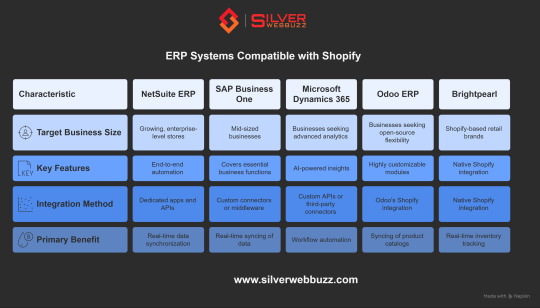#integration and compatibility
Explore tagged Tumblr posts
Text
Integration & Compatibility: Fundamentals in Database Building

Introduction
It is paramount that different systems and databases are totally integrated and compatible with one another because of the current fast-changing pace of business in a data-driven world. It may become inevitable for any organization that seeks to operate with relatively smooth-running performance, efficient data handling, and optimal system performance. Therefore, what is integration and compatibility? In this blog, the terms of database management are identified, why they are important, and how this affects the efficiency of your business.
The term integration means integration of multiple databases, systems, and software packages. With this, they would be able to communicate with each other and exchange data properly. Without proper integration, businesses end up in silos. Valuable information is located separately and cannot be accessed and analyzed together. Integration and compatibility ensure smooth flow of data across platforms, allowing businesses to stream the processes while extracting valuable insights from data.
Benefits of Integration
Single view to information: A system integration is meant to provide an enterprise with all the information from one single platform that serves at the disposal. This helps in eliminating silos and also maximizes data visibility.
Automation: It would allow a business to automate processes by adding to productivity, thus reducing the scope for human failure.
Better Decision: The integration of data would lead the business to make better decisions based on data through real-time insights.
What is compatibility?
Incompatibility means that multiple systems, databases, or software could coexist without problems. From a database management perspective, it ensures that your old systems are speaking to the new tools or technologies installed and do not have to adapt extensively to the existing framework in place. Integration and compatibility between the systems become part of the critical analysis of the business while scaling up or deploying new technologies, and the existing infrastructure remains in place.
Seamless Operations: Compatibility ensures your new system and tools will work well and make less of your existing infrastructure not run during that time, thus potentially reducing the quantity of downtime and operational disruption.
Future-Proofing: Ensuring compatibility, therefore, allows your business to easily adopt new technologies and scale with them without having to really overhaul systems significantly.
Data Consistency: System integration ensures that systems do agree in terms of data format. There is no possibility of errors or loss of information while integrating systems.
Ready to Build a Smarter Database? Get in touch with us for custom database building solutions with actionable data integration and insights to guide your business to success.
Why Integration and Compatibility Matter in Database Management
Well, integration and compatibility are on either side of the same coin in database management. Together, they will work to ensure that the different systems gear well towards each other's operations, hence allowing businesses to run with operational efficiency and agility. If at all the data is freely taking up the flow between various platforms or if the operation of the workflows has become even more automated due to the well-integrated and compatible systems, then decision-making will be faster and more accurate. Businesses using more than one database or platform, integration and compatibility come in handy.
Break Down Data Silos: It tends to create data silos; hence, it makes it really tough to source the needed info from various teams. Integration and compatibility break the silos and breaks them down to the parties of the departments to provide the required data.
Efficiency Optimization: Business efficiently automates processes whenever systems work together with integration and compatibility instead of keeping on carrying out the manual data handling, hence increasing efficiency.
Enable Real-Time Insights: Integrated and compatible systems help businesses tap into real-time data insights, so they don't have to wait for answers, which leads them to make quick informed decisions.
How to Achieve seamless integration and compatibility
Integration and compatibility do not come overnight. Much planning is to be done, and ideal tools must be in place. Here are a few strategies that businesses can use towards the full integration and compatibility of their database systems:
Select Compatible Tools: Make sure that the new software or database is compatible with existing systems. Select solutions that are open-standard-based and have better integration capabilities.
Middleware: Middleware is middleware, which makes it possible for many systems to be worked across integrated technologies or platforms as well.
Cloud-Based Solutions: The majority of cloud-based services are designed directly with integration and compatibility in mind. Therefore, most people will find it easy to connect different systems and grow with your business.
Work with Database Management Experts: If the systems are very complex or badly fragmented, you might encounter some challenges in their integration and compatibility; working with experienced database management experts can make this possible.
Conclusion
In the database management world, nothing keeps the systems running so efficiently with automated workflows and timely insights into data except for integration and compatibility. Without integration and compatibility, businesses are liable to face inefficiencies and data silos and often cannot scale as expected. Such focus helps ensure that businesses create an integrated data environment that not only responds to their present needs but also prepares for future growth.
Enhance the performance of your database building in terms of integration & compatibility. Contact us today to know how we can optimize the management of data and future proof your business.
Also Read:
What is Database Building?
Database Refresh: A Must for Data-Driven Success
Data analysis and insights: Explained
0 notes
Text
Autoenshittification

Forget F1: the only car race that matters now is the race to turn your car into a digital extraction machine, a high-speed inkjet printer on wheels, stealing your private data as it picks your pocket. Your car’s digital infrastructure is a costly, dangerous nightmare — but for automakers in pursuit of postcapitalist utopia, it’s a dream they can’t give up on.
Your car is stuffed full of microchips, a fact the world came to appreciate after the pandemic struck and auto production ground to a halt due to chip shortages. Of course, that wasn’t the whole story: when the pandemic started, the automakers panicked and canceled their chip orders, only to immediately regret that decision and place new orders.
But it was too late: semiconductor production had taken a serious body-blow, and when Big Car placed its new chip orders, it went to the back of a long, slow-moving line. It was a catastrophic bungle: microchips are so integral to car production that a car is basically a computer network on wheels that you stick your fragile human body into and pray.
The car manufacturers got so desperate for chips that they started buying up washing machines for the microchips in them, extracting the chips and discarding the washing machines like some absurdo-dystopian cyberpunk walnut-shelling machine:
https://www.autoevolution.com/news/desperate-times-companies-buy-washing-machines-just-to-rip-out-the-chips-187033.html
These digital systems are a huge problem for the car companies. They are the underlying cause of a precipitous decline in car quality. From touch-based digital door-locks to networked sensors and cameras, every digital system in your car is a source of endless repair nightmares, costly recalls and cybersecurity vulnerabilities:
https://www.reuters.com/business/autos-transportation/quality-new-vehicles-us-declining-more-tech-use-study-shows-2023-06-22/
What’s more, drivers hate all the digital bullshit, from the janky touchscreens to the shitty, wildly insecure apps. Digital systems are drivers’ most significant point of dissatisfaction with the automakers’ products:
https://www.theverge.com/23801545/car-infotainment-customer-satisifaction-survey-jd-power
Even the automakers sorta-kinda admit that this is a problem. Back in 2020 when Massachusetts was having a Right-to-Repair ballot initiative, Big Car ran these unfuckingbelievable scare ads that basically said, “Your car spies on you so comprehensively that giving anyone else access to its systems will let murderers stalk you to your home and kill you:
https://pluralistic.net/2020/09/03/rip-david-graeber/#rolling-surveillance-platforms
But even amid all the complaining about cars getting stuck in the Internet of Shit, there’s still not much discussion of why the car-makers are making their products less attractive, less reliable, less safe, and less resilient by stuffing them full of microchips. Are car execs just the latest generation of rubes who’ve been suckered by Silicon Valley bullshit and convinced that apps are a magic path to profitability?
Nope. Car execs are sophisticated businesspeople, and they’re surfing capitalism’s latest — and last — hot trend: dismantling capitalism itself.
Now, leftists have been predicting the death of capitalism since The Communist Manifesto, but even Marx and Engels warned us not to get too frisky: capitalism, they wrote, is endlessly creative, constantly reinventing itself, re-emerging from each crisis in a new form that is perfectly adapted to the post-crisis reality:
https://www.nytimes.com/2022/10/31/books/review/a-spectre-haunting-china-mieville.html
But capitalism has finally run out of gas. In his forthcoming book, Techno Feudalism: What Killed Capitalism, Yanis Varoufakis proposes that capitalism has died — but it wasn’t replaced by socialism. Rather, capitalism has given way to feudalism:
https://www.penguin.co.uk/books/451795/technofeudalism-by-varoufakis-yanis/9781847927279
Under capitalism, capital is the prime mover. The people who own and mobilize capital — the capitalists — organize the economy and take the lion’s share of its returns. But it wasn’t always this way: for hundreds of years, European civilization was dominated by rents, not markets.
A “rent” is income that you get from owning something that other people need to produce value. Think of renting out a house you own: not only do you get paid when someone pays you to live there, you also get the benefit of rising property values, which are the result of the work that all the other homeowners, business owners, and residents do to make the neighborhood more valuable.
The first capitalists hated rent. They wanted to replace the “passive income” that landowners got from taxing their serfs’ harvest with active income from enclosing those lands and grazing sheep in order to get wool to feed to the new textile mills. They wanted active income — and lots of it.
Capitalist philosophers railed against rent. The “free market” of Adam Smith wasn’t a market that was free from regulation — it was a market free from rents. The reason Smith railed against monopolists is because he (correctly) understood that once a monopoly emerged, it would become a chokepoint through which a rentier could cream off the profits he considered the capitalist’s due:
https://locusmag.com/2021/03/cory-doctorow-free-markets/
Today, we live in a rentier’s paradise. People don’t aspire to create value — they aspire to capture it. In Survival of the Richest, Doug Rushkoff calls this “going meta”: don’t provide a service, just figure out a way to interpose yourself between the provider and the customer:
https://pluralistic.net/2022/09/13/collapse-porn/#collapse-porn
Don’t drive a cab, create Uber and extract value from every driver and rider. Better still: don’t found Uber, invest in Uber options and extract value from the people who invest in Uber. Even better, invest in derivatives of Uber options and extract value from people extracting value from people investing in Uber, who extract value from drivers and riders. Go meta.
This is your brain on the four-hour-work-week, passive income mind-virus. In Techno Feudalism, Varoufakis deftly describes how the new “Cloud Capital” has created a new generation of rentiers, and how they have become the richest, most powerful people in human history.
Shopping at Amazon is like visiting a bustling city center full of stores — but each of those stores’ owners has to pay the majority of every sale to a feudal landlord, Emperor Jeff Bezos, who also decides which goods they can sell and where they must appear on the shelves. Amazon is full of capitalists, but it is not a capitalist enterprise. It’s a feudal one:
https://pluralistic.net/2022/11/28/enshittification/#relentless-payola
This is the reason that automakers are willing to enshittify their products so comprehensively: they were one of the first industries to decouple rents from profits. Recall that the reason that Big Car needed billions in bailouts in 2008 is that they’d reinvented themselves as loan-sharks who incidentally made cars, lending money to car-buyers and then “securitizing” the loans so they could be traded in the capital markets.
Even though this strategy brought the car companies to the brink of ruin, it paid off in the long run. The car makers got billions in public money, paid their execs massive bonuses, gave billions to shareholders in buybacks and dividends, smashed their unions, fucked their pensioned workers, and shipped jobs anywhere they could pollute and murder their workforce with impunity.
Car companies are on the forefront of postcapitalism, and they understand that digital is the key to rent-extraction. Remember when BMW announced that it was going to rent you the seatwarmer in your own fucking car?
https://pluralistic.net/2020/07/02/big-river/#beemers
Not to be outdone, Mercedes announced that they were going to rent you your car’s accelerator pedal, charging an extra $1200/year to unlock a fully functional acceleration curve:
https://www.theverge.com/2022/11/23/23474969/mercedes-car-subscription-faster-acceleration-feature-price
This is the urinary tract infection business model: without digitization, all your car’s value flowed in a healthy stream. But once the car-makers add semiconductors, each one of those features comes out in a painful, burning dribble, with every button on that fakakta touchscreen wired directly into your credit-card.
But it’s just for starters. Computers are malleable. The only computer we know how to make is the Turing Complete Von Neumann Machine, which can run every program we know how to write. Once they add networked computers to your car, the Car Lords can endlessly twiddle the knobs on the back end, finding new ways to extract value from you:
https://doctorow.medium.com/twiddler-1b5c9690cce6
That means that your car can track your every movement, and sell your location data to anyone and everyone, from marketers to bounty-hunters looking to collect fees for tracking down people who travel out of state for abortions to cops to foreign spies:
https://www.vice.com/en/article/n7enex/tool-shows-if-car-selling-data-privacy4cars-vehicle-privacy-report
Digitization supercharges financialization. It lets car-makers offer subprime auto-loans to desperate, poor people and then killswitch their cars if they miss a payment:
https://www.youtube.com/watch?v=4U2eDJnwz_s
Subprime lending for cars would be a terrible business without computers, but digitization makes it a great source of feudal rents. Car dealers can originate loans to people with teaser rates that quickly blow up into payments the dealer knows their customer can’t afford. Then they repo the car and sell it to another desperate person, and another, and another:
https://pluralistic.net/2022/07/27/boricua/#looking-for-the-joke-with-a-microscope
Digitization also opens up more exotic options. Some subprime cars have secondary control systems wired into their entertainment system: miss a payment and your car radio flips to full volume and bellows an unstoppable, unmutable stream of threats. Tesla does one better: your car will lock and immobilize itself, then blare its horn and back out of its parking spot when the repo man arrives:
https://tiremeetsroad.com/2021/03/18/tesla-allegedly-remotely-unlocks-model-3-owners-car-uses-smart-summon-to-help-repo-agent/
Digital feudalism hasn’t stopped innovating — it’s just stopped innovating good things. The digital device is an endless source of sadistic novelties, like the cellphones that disable your most-used app the first day you’re late on a payment, then work their way down the other apps you rely on for every day you’re late:
https://restofworld.org/2021/loans-that-hijack-your-phone-are-coming-to-india/
Usurers have always relied on this kind of imaginative intimidation. The loan-shark’s arm-breaker knows you’re never going to get off the hook; his goal is in intimidating you into paying his boss first, liquidating your house and your kid’s college fund and your wedding ring before you default and he throws you off a building.
Thanks to the malleability of computerized systems, digital arm-breakers have an endless array of options they can deploy to motivate you into paying them first, no matter what it costs you:
https://pluralistic.net/2021/04/02/innovation-unlocks-markets/#digital-arm-breakers
Car-makers are trailblazers in imaginative rent-extraction. Take VIN-locking: this is the practice of adding cheap microchips to engine components that communicate with the car’s overall network. After a new part is installed in your car, your car’s computer does a complex cryptographic handshake with the part that requires an unlock code provided by an authorized technician. If the code isn’t entered, the car refuses to use that part.
VIN-locking has exploded in popularity. It’s in your iPhone, preventing you from using refurb or third-party replacement parts:
https://doctorow.medium.com/apples-cement-overshoes-329856288d13
It’s in fuckin’ ventilators, which was a nightmare during lockdown as hospital techs nursed their precious ventilators along by swapping parts from dead systems into serviceable ones:
https://www.vice.com/en/article/3azv9b/why-repair-techs-are-hacking-ventilators-with-diy-dongles-from-poland
And of course, it’s in tractors, along with other forms of remote killswitch. Remember that feelgood story about John Deere bricking the looted Ukrainian tractors whose snitch-chips showed they’d been relocated to Russia?
https://doctorow.medium.com/about-those-kill-switched-ukrainian-tractors-bc93f471b9c8
That wasn’t a happy story — it was a cautionary tale. After all, John Deere now controls the majority of the world’s agricultural future, and they’ve boobytrapped those ubiquitous tractors with killswitches that can be activated by anyone who hacks, takes over, or suborns Deere or its dealerships.
Control over repair isn’t limited to gouging customers on parts and service. When a company gets to decide whether your device can be fixed, it can fuck you over in all kinds of ways. Back in 2019, Tim Apple told his shareholders to expect lower revenues because people were opting to fix their phones rather than replace them:
https://www.apple.com/newsroom/2019/01/letter-from-tim-cook-to-apple-investors/
By usurping your right to decide who fixes your phone, Apple gets to decide whether you can fix it, or whether you must replace it. Problem solved — and not just for Apple, but for car makers, tractor makers, ventilator makers and more. Apple leads on this, even ahead of Big Car, pioneering a “recycling” program that sees trade-in phones shredded so they can’t possibly be diverted from an e-waste dump and mined for parts:
https://www.vice.com/en/article/yp73jw/apple-recycling-iphones-macbooks
John Deere isn’t sleeping on this. They’ve come up with a valuable treasure they extract when they win the Right-to-Repair: Deere singles out farmers who complain about its policies and refuses to repair their tractors, stranding them with six-figure, two-ton paperweight:
https://pluralistic.net/2022/05/31/dealers-choice/#be-a-shame-if-something-were-to-happen-to-it
The repair wars are just a skirmish in a vast, invisible fight that’s been waged for decades: the War On General-Purpose Computing, where tech companies use the law to make it illegal for you to reconfigure your devices so they serve you, rather than their shareholders:
https://memex.craphound.com/2012/01/10/lockdown-the-coming-war-on-general-purpose-computing/
The force behind this army is vast and grows larger every day. General purpose computers are antithetical to technofeudalism — all the rents extracted by technofeudalists would go away if others (tinkereres, co-ops, even capitalists!) were allowed to reconfigure our devices so they serve us.
You’ve probably noticed the skirmishes with inkjet printer makers, who can only force you to buy their ink at 20,000% markups if they can stop you from deciding how your printer is configured:
https://pluralistic.net/2022/08/07/inky-wretches/#epson-salty But we’re also fighting against insulin pump makers, who want to turn people with diabetes into walking inkjet printers:
https://pluralistic.net/2022/06/10/loopers/#hp-ification
And companies that make powered wheelchairs:
https://pluralistic.net/2022/06/08/chair-ish/#r2r
These companies start with people who have the least agency and social power and wreck their lives, then work their way up the privilege gradient, coming for everyone else. It’s called the “shitty technology adoption curve”:
https://pluralistic.net/2022/08/21/great-taylors-ghost/#solidarity-or-bust
Technofeudalism is the public-private-partnership from hell, emerging from a combination of state and private action. On the one hand, bailing out bankers and big business (rather than workers) after the 2008 crash and the covid lockdown decoupled income from profits. Companies spent billions more than they earned were still wildly profitable, thanks to those public funds.
But there’s also a policy dimension here. Some of those rentiers’ billions were mobilized to both deconstruct antitrust law (allowing bigger and bigger companies and cartels) and to expand “IP” law, turning “IP” into a toolsuite for controlling the conduct of a firm’s competitors, critics and customers:
https://locusmag.com/2020/09/cory-doctorow-ip/
IP is key to understanding the rise of technofeudalism. The same malleability that allows companies to “twiddle” the knobs on their services and keep us on the hook as they reel us in would hypothetically allow us to countertwiddle, seizing the means of computation:
https://pluralistic.net/2023/04/12/algorithmic-wage-discrimination/#fishers-of-men
The thing that stands between you and an alternative app store, an interoperable social media network that you can escape to while continuing to message the friends you left behind, or a car that anyone can fix or unlock features for is IP, not technology. Under capitalism, that technology would already exist, because capitalists have no loyalty to one another and view each other’s margins as their own opportunities.
But under technofeudalism, control comes from rents (owning things), not profits (selling things). The capitalist who wants to participate in your iPhone’s “ecosystem” has to make apps and submit them to Apple, along with 30% of their lifetime revenues — they don’t get to sell you jailbreaking kit that lets you choose their app store.
Rent-seeking technology has a holy grail: control over “ring zero” — the ability to compel you to configure your computer to a feudalist’s specifications, and to verify that you haven’t altered your computer after it came into your possession:
https://pluralistic.net/2022/01/30/ring-minus-one/#drm-political-economy
For more than two decades, various would-be feudal lords and their court sorcerers have been pitching ways of doing this, of varying degrees of outlandishness.
At core, here’s what they envision: inside your computer, they will nest another computer, one that is designed to run a very simple set of programs, none of which can be altered once it leaves the factory. This computer — either a whole separate chip called a “Trusted Platform Module” or a region of your main processor called a secure enclave — can tally observations about your computer: which operating system, modules and programs it’s running.
Then it can cryptographically “sign” these observations, proving that they were made by a secure chip and not by something you could have modified. Then you can send this signed “attestation” to someone else, who can use it to determine how your computer is configured and thus whether to trust it. This is called “remote attestation.”
There are some cool things you can do with remote attestation: for example, two strangers playing a networked video game together can use attestations to make sure neither is running any cheat modules. Or you could require your cloud computing provider to use attestations that they aren’t stealing your data from the server you’re renting. Or if you suspect that your computer has been infected with malware, you can connect to someone else and send them an attestation that they can use to figure out whether you should trust it.
Today, there’s a cool remote attestation technology called “PrivacyPass” that replaces CAPTCHAs by having you prove to your own device that you are a human. When a server wants to make sure you’re a person, it sends a random number to your device, which signs that number along with its promise that it is acting on behalf of a human being, and sends it back. CAPTCHAs are all kinds of bad — bad for accessibility and privacy — and this is really great.
But the billions that have been thrown at remote attestation over the decades is only incidentally about solving CAPTCHAs or verifying your cloud server. The holy grail here is being able to make sure that you’re not running an ad-blocker. It’s being able to remotely verify that you haven’t disabled the bossware your employer requires. It’s the power to block someone from opening an Office365 doc with LibreOffice. It’s your boss’s ability to ensure that you haven’t modified your messaging client to disable disappearing messages before he sends you an auto-destructing memo ordering you to break the law.
And there’s a new remote attestation technology making the rounds: Google’s Web Environment Integrity, which will leverage Google’s dominance over browsers to allow websites to block users who run ad-blockers:
https://github.com/RupertBenWiser/Web-Environment-Integrity
There’s plenty else WEI can do (it would make detecting ad-fraud much easier), but for every legitimate use, there are a hundred ways this could be abused. It’s a technology purpose-built to allow rent extraction by stripping us of our right to technological self-determination.
Releasing a technology like this into a world where companies are willing to make their products less reliable, less attractive, less safe and less resilient in pursuit of rents is incredibly reckless and shortsighted. You want unauthorized bread? This is how you get Unauthorized Bread:
https://arstechnica.com/gaming/2020/01/unauthorized-bread-a-near-future-tale-of-refugees-and-sinister-iot-appliances/amp/

If you'd like an essay-formatted version of this thread to read or share, here's a link to it on pluralistic.net, my surveillance-free, ad-free, tracker-free blog:
https://pluralistic.net/2023/07/24/rent-to-pwn/#kitt-is-a-demon

[Image ID: The interior of a luxury car. There is a dagger protruding from the steering wheel. The entertainment console has been replaced by the text 'You wouldn't download a car,' in MPAA scare-ad font. Outside of the windscreen looms the Matrix waterfall effect. Visible in the rear- and side-view mirror is the driver: the figure from Munch's 'Scream.' The screen behind the steering-wheel has been replaced by the menacing red eye of HAL9000 from Stanley Kubrick's '2001: A Space Odyssey.']

Image: Cryteria (modified) https://commons.wikimedia.org/wiki/File:HAL9000.svg
CC BY 3.0 https://creativecommons.org/licenses/by/3.0/deed.en
#pluralistic#shitty technology adoption curve#unauthorized bread#automotive#arm-breakers#cars#big car#right to repair#rent-seeking#digital feudalism#neofeudalism#drm#wei#remote attestation#private access tokens#yannis varoufakis#web environment integrity#paternalism#war on general purpose computing#competitive compatibility#google#enshittification#interoperability#adversarial interoperability#comcom#the internet con#postcapitalism#ring zero#care#med-tech
4K notes
·
View notes
Text










#and he made sure of that!
#hsmtmtsedit#hsmtmts#ricky x gina#usersnat#userelsbeth#queenmay#userzaley#pretend i figured out how to integrate 'i go big gina you know that' KJSDKF#i leaned towards the bigger gestures for this but there's a lot of small things he did for her as well :')#finally able to shower his person in love <3#and gina loves it they're truly the most compatible#ricky bowen#gina porter#rina#*#rinaedit#hsmtmts spoilers#flashing gif#b&w feels dramatic but i needed to offset them somehow
651 notes
·
View notes
Text
I do not even really know what to say about how ive been feeling about myself and my brain issues lately. Ive felt especially like nothing i guess. like the "social" self i have is further away from any "real" emotions than ever. Beh
#and being around people has been hard. ranging from mild discomfort/suspicion/confusion to constant freeze/flight response#mood swings fucking insane lately.imean neurodivergent.#i realized something big that i think may have rocked my shit#and i think some of us that had good integration have less good. now#less compatible emotions and opinions on the past#socialfunnyguy isnt having the Around People issues at least
4 notes
·
View notes
Text

5 Leading ERP Systems Compatible with Shopify
Discover 5 top ERP systems that sync easily with Shopify to boost your store’s performance and simplify operations.
0 notes
Text
Numerical Relays - Adlite Electricals

Enhance Power System Efficiency with CGI 14N 75-250VDC Relay
For reliable electrical system performance, a high-quality auxiliary relay is essential. The CGI 14N 75-250VDC Relay, available at Adlite Electricals, is designed for superior performance in industrial, commercial, and power utility applications. With its voltage range of 75-250VDC, it ensures stable and efficient operation in electrical protection and automation systems.
What is the CGI 14N 75-250VDC Relay?
The CGI 14N 75-250VDC Relay is an advanced auxiliary relay used in control and protection circuits. It processes electrical signals efficiently and enables precise switching for power management.
Key Features of CGI 14N 75-250VDC Relay
This relay offers exceptional advantages, making it an ideal choice for power system applications:
Wide Voltage Compatibility: Operates efficiently between 75-250VDC, making it suitable for diverse electrical systems.
High-Speed Response: Ensures rapid activation to prevent faults and enhance system safety.
Rugged and Durable Design: Built for long-term use in demanding industrial environments.
Compact and Easy Installation: Allows seamless integration into various electrical setups.
Reliable Contact Multiplication: Enhances control circuit performance and dependability.
Applications of CGI 14N 75-250VDC Relay
The CGI 14N 75-250VDC Relay is widely used in multiple industries due to its high reliability and efficiency, including:
Power Plants: Assists in relay protection and circuit breaker operations.
Industrial Automation: Enables precise switching in manufacturing processes.
Substations: Supports stable grid management and fault isolation.
Renewable Energy Systems: Facilitates integration in solar and wind energy projects for efficient power control.
Why Choose CGI 14N 75-250VDC Relay from Adlite Electricals?
When it comes to sourcing top-quality electrical protection devices, Adlite Electricals is your trusted provider. Here’s why:
Genuine and Certified Products: Ensuring superior quality and reliability.
Affordable Prices: Get the best value for high-performance electrical components.
Hassle-Free Online Shopping: A seamless purchasing experience with expert support.
Fast and Secure Delivery: Ensuring timely arrival of your relay in perfect condition.
Conclusion
The CGI 14N 75-250VDC Relay is a must-have for industries that require a dependable, high-speed, and durable relay solution. Its wide voltage range and compact design make it ideal for numerous electrical applications.
Order your CGI 14N 75-250VDC Relay today from Adlite Electricals and enhance your system’s efficiency and safety!
Related Products
#CGI 110VDC Master Trip Relay
#CGI 14C 18-52VDC Relay
#CGI 14C 75-250VDC Relay
#CGI 14N 18-52VDC Relay
#CGI 14S 230VAC Relay
#CGI 24C 18-52VDC Relay
#CGI 24C 75-250VDC Relay
#CGXH1 3 Element Aux 110 VDC Relay
#Crompton TCSR Unit 110 VDC Relay
#Megawin M140c Relay
#Megawin MB 140c (Breaker Manager Relay)
#Enhance Power System Efficiency with CGI 14N 75-250VDC Relay#For reliable electrical system performance#a high-quality auxiliary relay is essential. The CGI 14N 75-250VDC Relay#available at Adlite Electricals#is designed for superior performance in industrial#commercial#and power utility applications. With its voltage range of 75-250VDC#it ensures stable and efficient operation in electrical protection and automation systems.#What is the CGI 14N 75-250VDC Relay?#The CGI 14N 75-250VDC Relay is an advanced auxiliary relay used in control and protection circuits. It processes electrical signals efficie#Key Features of CGI 14N 75-250VDC Relay#This relay offers exceptional advantages#making it an ideal choice for power system applications:#•#Wide Voltage Compatibility: Operates efficiently between 75-250VDC#making it suitable for diverse electrical systems.#High-Speed Response: Ensures rapid activation to prevent faults and enhance system safety.#Rugged and Durable Design: Built for long-term use in demanding industrial environments.#Compact and Easy Installation: Allows seamless integration into various electrical setups.#Reliable Contact Multiplication: Enhances control circuit performance and dependability.#Applications of CGI 14N 75-250VDC Relay#The CGI 14N 75-250VDC Relay is widely used in multiple industries due to its high reliability and efficiency#including:#Power Plants: Assists in relay protection and circuit breaker operations.#Industrial Automation: Enables precise switching in manufacturing processes.#Substations: Supports stable grid management and fault isolation.#Renewable Energy Systems: Facilitates integration in solar and wind energy projects for efficient power control.#Why Choose CGI 14N 75-250VDC Relay from Adlite Electricals?#When it comes to sourcing top-quality electrical protection devices#Adlite Electricals is your trusted provider. Here’s why:
0 notes
Text
Refrigeration Evaporator Sizing and Selection
The evaporator is a critical component in any refrigeration system, serving as the heart of the cooling process. Proper sizing and selection of evaporators directly impacts system efficiency, operating costs, and cooling performance. This report examines the methodical approach to evaporator sizing and selection, combining engineering principles with practical considerations for optimal system…

View On WordPress
#air-cooled evaporators#coaxial heat exchangers#compressor-evaporator matching#cooling capacity#Energy efficiency#evaporator selection criteria#evaporator types#expansion device selection#heat load calculation#humidity control#refrigerant compatibility#refrigeration cycle#refrigeration evaporator sizing#safety margin#subcooling#superheat control#system integration#temperature differential#Thermodynamic process#water-cooled evaporators
0 notes
Text
Vegan Meal Planning Guide & Tips with GlucoTrust

In today's world, embracing a vegan lifestyle is more than just a trend—it's a commitment to health, the environment, and ethical living. Whether you're new to veganism or a seasoned plant-based eater, meal planning can be a game-changer in maintaining a balanced diet. As we dive into this guide, I'll provide you with essential tips and insights to make vegan meal planning both effective and enjoyable.
Key Takeaways
Vegan diets are linked to improved heart health and weight management.
Common vegan challenges include nutritional deficiencies which can be managed with proper planning.
Essential vegan staples include whole grains, legumes, nuts, and a variety of fruits and vegetables.
Effective meal planning involves creating balanced meals, batch cooking, and proper storage techniques.
Incorporating supplements like GlucoTrust can support overall health and manage blood sugar levels.
Vegan Meal Planning 101
Vegan meal planning is all about ensuring you get a variety of nutrients from plant-based sources. It's not just about eliminating animal products; it's about embracing a wide array of foods that provide essential vitamins and minerals.
Benefits of a Vegan Lifestyle
Adopting a vegan lifestyle offers numerous benefits, not only for your health but also for the planet. Studies show that a vegan diet can lead to lower cholesterol levels, reduced risk of heart disease, and better weight management.
"A well-planned vegan diet is rich in fruits, vegetables, whole grains, and legumes, providing ample fiber, antioxidants, and phytonutrients." - Nutrition Expert
Besides health benefits, veganism is also an ethical choice that reduces animal suffering and environmental impact. By choosing plant-based foods, you contribute to a more sustainable world.
Overcoming Common Vegan Challenges
While veganism has its perks, it also comes with challenges, particularly regarding nutritional intake. Some common concerns include getting enough protein, vitamin B12, iron, and omega-3 fatty acids.
To overcome these challenges, it's crucial to diversify your food choices. Incorporate a variety of legumes, nuts, seeds, and fortified foods to meet your nutritional needs. Additionally, consider supplements for nutrients that are harder to obtain from a vegan diet.
Essential Vegan Staples for Every Kitchen
Stocking your kitchen with the right ingredients is the first step towards successful vegan meal planning. Here are some essentials to keep on hand:
Whole grains: quinoa, brown rice, oats
Legumes: lentils, chickpeas, black beans
Nuts and seeds: almonds, chia seeds, flaxseeds
Fruits and vegetables: leafy greens, berries, avocados
Plant-based proteins: tofu, tempeh, seitan
Strategies for Effective Vegan Meal Planning
With the right strategies, vegan meal planning can be straightforward and rewarding. Here are some tips to get you started:
Creating a Balanced Meal Plan
A balanced meal plan ensures you get all the nutrients your body needs. Aim to include a variety of food groups in each meal. For instance, a typical plate could include:
A serving of whole grains
A portion of plant-based protein
A generous helping of vegetables
Healthy fats from nuts or avocados
Remember, balance is key. By diversifying your meals, you not only enjoy a range of flavors but also cover your nutritional bases.
How to Build a Weekly Vegan Menu
Building a weekly menu helps streamline your grocery shopping and meal prep. Start by planning your meals around seasonal produce, which is often fresher and more affordable. Consider these steps:
Choose a theme for each day (e.g., Taco Tuesday, Stir-fry Saturday).
Include a variety of cuisines to keep meals exciting.
Plan for leftovers to save time and reduce waste.
With a clear menu, you'll find it easier to stick to your vegan diet and enjoy every meal.
What is GlucoTrust?
GlucoTrust is a natural supplement designed to support healthy blood sugar levels. It's crafted from a blend of ingredients known for their ability to enhance glucose metabolism and improve overall well-being. This supplement can be especially beneficial for those on a vegan diet, as it helps address some common nutritional gaps.
One of the standout features of GlucoTrust is its plant-based formulation, which aligns perfectly with vegan principles. It contains a mix of herbs and nutrients that work together to stabilize blood sugar, thereby supporting energy levels and reducing cravings.
Benefits of GlucoTrust for Vegan Diets
Integrating GlucoTrust into a vegan diet can offer several advantages. Firstly, it helps maintain steady blood sugar levels, which is crucial for preventing energy crashes and managing weight. This is particularly important for vegans, as plant-based diets can sometimes lead to fluctuations in blood sugar due to the high carbohydrate content of many vegan foods.
Furthermore, GlucoTrust provides essential nutrients that might be lacking in a typical vegan diet. For instance, chromium, one of its key components, plays a vital role in insulin function and glucose metabolism. By ensuring adequate intake of such nutrients, GlucoTrust supports overall metabolic health and well-being.
Integrating GlucoTrust into Daily Meals
Incorporating GlucoTrust into your daily routine is straightforward. It's recommended to take it with meals to enhance its effectiveness. You can simply add it to your morning smoothie or take it alongside your breakfast to kickstart your day with balanced energy levels.
Shopping Tips for Vegan Meal Planning
Shopping for vegan meals doesn't have to be complicated or expensive. With the right strategies, you can fill your pantry with nutritious ingredients without breaking the bank. Here are some tips to guide you:
Firstly, focus on whole foods. These are not only more nutritious but often cheaper than processed vegan alternatives. Stock up on staples like beans, lentils, whole grains, and seasonal produce. Buying in bulk can also save you money in the long run.
Another tip is to plan your meals around sales and discounts. Check weekly flyers for deals on fresh produce and vegan-friendly products. This approach ensures variety in your meals while keeping costs down.
Budget-Friendly Vegan Grocery Tips
Eating vegan on a budget is entirely possible with a little planning. Here are some practical tips:
Buy seasonal produce: It's cheaper and often more flavorful.
Opt for store brands: They usually offer the same quality at a lower price.
Use coupons and loyalty programs: They can lead to significant savings over time.
By being strategic with your purchases, you can enjoy a diverse and delicious vegan diet without overspending.
Reading Labels for Hidden Animal Products
When shopping for vegan products, it's essential to read labels carefully. Some items may contain hidden animal-derived ingredients, such as gelatin, casein, or shellac. Familiarize yourself with common non-vegan additives to avoid unintentional consumption.
Local Markets vs Supermarkets
Choosing between local markets and supermarkets can impact both your budget and the quality of your food. Local markets often offer fresher produce and unique vegan products that you might not find in larger stores. Supporting local farmers also promotes sustainable practices.
However, supermarkets provide convenience and a broader range of options. They often carry a variety of vegan brands and products, making it easier to find everything you need in one place. For those interested in planning meals, a complete vegan meal plan can be a helpful resource. Ultimately, the choice depends on your priorities and lifestyle.
Maintaining Nutritional Balance in a Vegan Diet
Protein — Lentils, chickpeas, tofu — 50-60g
Iron — Spinach, quinoa, pumpkin seeds — 18mg
Vitamin B12 — Fortified cereals, nutritional yeast — 2.4μg
Omega-3 Fatty Acids — Chia seeds, flaxseeds, walnuts — 1.1-1.6g
Maintaining a balanced vegan diet requires attention to certain nutrients that are more challenging to obtain from plant sources. Protein and iron are two such nutrients, crucial for muscle repair and oxygen transport, respectively.
To meet your protein needs, incorporate a variety of plant-based proteins into your meals. Legumes, tofu, and tempeh are excellent choices that provide all essential amino acids.
Iron, on the other hand, is best absorbed when consumed with vitamin C-rich foods. Pairing spinach with bell peppers or quinoa with tomatoes can enhance iron absorption significantly.
Importance of Protein and Iron
Protein is vital for building and repairing tissues, making it an essential component of a vegan diet. Fortunately, there are plenty of plant-based options to choose from. Consider adding lentils, chickpeas, and black beans to your meals for a protein boost.
Iron, equally important, helps transport oxygen throughout the body. Vegans can meet their iron needs by consuming foods like spinach, quinoa, and pumpkin seeds. To enhance absorption, pair these with vitamin C-rich foods like citrus fruits and bell peppers.
By focusing on these nutrients, you can ensure your vegan diet supports your overall health and vitality.
Vitamins and Supplements to Consider
While a well-planned vegan diet can provide most nutrients, certain vitamins and supplements might be necessary to fill any gaps. Vitamin B12, for instance, is primarily found in animal products, so vegans should consider fortified foods or supplements.
Additionally, omega-3 fatty acids, essential for brain health, can be obtained from flaxseeds, chia seeds, and walnuts. However, a supplement like algal oil might be beneficial for those who struggle to meet their needs through food alone.
Watching Out for Common Deficiencies
Being aware of potential deficiencies is crucial for maintaining health on a vegan diet. Besides vitamin B12 and omega-3s, keep an eye on calcium, vitamin D, and zinc intake. Fortified plant milks, sunlight exposure, and a variety of nuts and seeds can help address these concerns.
Regular check-ups and blood tests can also provide insight into your nutritional status, allowing you to adjust your diet or supplement regimen as needed.
Continuing Your Vegan Journey
Embarking on a vegan journey is an exciting adventure filled with new flavors and health benefits. It's a lifestyle choice that aligns with ethical values and environmental consciousness. However, like any journey, it's essential to have a plan and a support system to stay on track and motivated.
Finding Community Support
Being part of a community can make a significant difference in maintaining your vegan lifestyle. Whether it's joining a local vegan group or participating in online forums, connecting with like-minded individuals provides encouragement and shared experiences.
Here are some ways to find community support:
Attend local vegan meetups or potlucks.
Join online forums and social media groups dedicated to veganism.
Engage with vegan influencers and bloggers for tips and inspiration.
Having a community not only offers support but also exposes you to new ideas and recipes, making your vegan journey more enjoyable and sustainable.
Experimenting with New Recipes
One of the joys of veganism is the opportunity to experiment with a variety of ingredients and cuisines. Trying new recipes keeps your meals exciting and ensures you don't fall into a dietary rut. Explore different cultural dishes and adapt them to be vegan-friendly. For example, try making a plant-based version of your favorite curry or pasta dish. The possibilities are endless, and experimenting in the kitchen can lead to discovering new favorites.
Progress Tracking and Reflection
Tracking your progress is a powerful tool for staying motivated and acknowledging your achievements. Keep a journal of your meals, how you feel physically and mentally, and any challenges you encounter. Reflecting on your journey helps identify areas for improvement and celebrates your successes. Regularly reviewing your progress reinforces your commitment and reminds you of the reasons you chose a vegan lifestyle in the first place.
Frequently Asked Questions
Adopting a vegan lifestyle often comes with questions, especially regarding nutrition and meal planning. Here are some common inquiries and their answers to help guide your journey.
How can I ensure enough protein intake on a vegan diet?
Protein is crucial for muscle repair and overall health. On a vegan diet, you can obtain protein from a variety of plant-based sources such as lentils, chickpeas, tofu, and quinoa. Including a mix of these foods in your daily meals ensures you get all essential amino acids. Aim for a balanced plate with protein-rich foods at each meal to meet your daily requirements.
Are there specific vegan foods that help manage blood sugar levels?
Certain vegan foods are excellent for managing blood sugar levels. High-fiber foods like oats, beans, and leafy greens slow down sugar absorption, keeping levels stable. Additionally, incorporating healthy fats from avocados and nuts can aid in blood sugar control. Pair these foods with GlucoTrust, a supplement designed to support healthy glucose metabolism, for optimal results.
What are the best sources of vitamin B12 for vegans?
Vitamin B12 is primarily found in animal products, making it a critical nutrient for vegans to monitor. Fortified foods such as plant milks, breakfast cereals, and nutritional yeast are excellent sources of B12. Alternatively, consider a B12 supplement to ensure adequate intake and prevent deficiencies.
How often should I include GlucoTrust in my diet?
Incorporating GlucoTrust into your daily routine can support balanced blood sugar levels. It's typically recommended to take GlucoTrust once a day with a meal. Consistency is key, so choose a time that fits seamlessly into your schedule, such as breakfast or lunch, to maximize its benefits.
What should I do if I experience deficiencies despite meal planning?
If you suspect nutritional deficiencies, it's important to address them promptly. Start by reviewing your meal plan to ensure it includes a variety of nutrient-rich foods. If deficiencies persist, consider consulting with a healthcare professional or a registered dietitian. They can provide personalized advice and recommend appropriate supplements to restore your nutrient balance.
#calorie tracking#exercise correlation#personalized meal plans#fitness goals#Apple Watch compatibility#exercise milestones#dietary preferences#community features#blood sugar monitoring#real-time glucose updates#food impact analysis#glucose monitor integration#emergency alerts#educational resources#client-specific goals#predictive dietary features#cultural dietary practices#progress reports#secure data handling#data privacy#metabolism optimization#workout tracking#nutrient absorption#real-time insights#vegan meal options#insulin management#continuous glucose monitoring#family notifications#diabetic care plan#metabolic rate predictions
0 notes
Text
CI/CD Pipeline Integration: Streamline Software Delivery with Assure QA
In today’s fast-paced development world, CI/CD Pipeline Integration is essential for seamless, automated software delivery. By integrating continuous testing and deployment, businesses can accelerate releases while maintaining quality.
Assure QA is the ultimate online platform for software quality assurance, offering functional, automation, performance, and security testing. With cutting-edge tools, Assure QA ensures robust, high-performing software, tailored to your needs. Whether it's web, API, or cross-browser testing, Assure QA empowers teams with reliable, scalable solutions.
Optimize your CI/CD workflow with Assure QA—where innovation meets reliability!


#CI/CD Pipeline Integration#DevOps Automation#Automated Testing Tools#API and Web Testing#Software Quality Assurance#Cross-Browser Compatibility Testing
1 note
·
View note
Text
How much time does it take to develop an app?
The time required to develop a mobile app is determined by its complexity, features, and platform (iOS, Android, or both). Typically, it can take between 3 and 9 months. The process starts with planning and research, which typically takes 2-4 weeks to determine the app's goal, target audience, and important features. The design phase (4-8 weeks) is the next step, during which wireframes and prototypes are used to create the user interface (UI) and user experience.
The development phase, which includes coding, takes the longest—ranging from 2 to 6 months or more, depending on whether the app is simple (e.g., a calculator) or complicated, with features such as real-time chat, payment systems, or AI. Testing and quality assurance take 2-6 weeks to correct errors, verify compatibility, and improve performance. Finally, the deployment phase takes approximately 1-2 weeks for app store submissions and approvals.
Third-party integrations, design revisions, and team skill can all influence the timeline. Working with an experienced app development team guarantees efficiency and quality. Whether you're creating a basic or complicated software, proper planning and teamwork can help to speed up the process.
#marketing#seo#branding#digital#content marketing#online marketing#digital marketing agency#digital marketing#email marketing#digital marketing in banglore#features#and platform (iOS#Android#or both). Typically#target audience#The development phase#which includes coding#a calculator) or complicated#with features such as real-time chat#payment systems#verify compatibility#and improve performance. Finally#Third-party integrations#design revisions
0 notes
Text
Kasa Smart Plug Mini 15A: Your Smart Home Solution
Gadgets and Home Essentials may earn a commission. You incur no extra cost when you buy through links on our site. Imagine a world where your home’s devices work perfectly with your Apple products. The Kasa Smart Plug Mini 15A makes this dream a reality. It changes how you handle your home’s energy and automation. This small but powerful plug integrates smoothly with Apple HomeKit. It brings…
#Apple HomeKit Integration#Energy-Efficient Smart Devices#Home Automation Solutions#Kasa Smart Plug Mini#Remote Control Outlets#Siri-Compatible Smart Plug#Smart Home Power Management#Smart Outlet with HomeKit Support
1 note
·
View note
Text
Headunit With Carplay for JEEP Compass | 2014-2016 | 10″ Inch

#Jeep Compass 2014-2016 Headunit#10-Inch Jeep Compass Stereo#Wireless CarPlay for Jeep Compass#Wireless Android Auto Integration#Digital Sound Processor Headunit#Reverse Camera Compatible Stereo#Front Camera Input for Jeep#Bluetooth 4.2 Car Stereo#Steering Wheel Control Compatible Stereo#Jeep Compass Climate Control Headunit#High-Quality RCA Output Stereo#FM/AM Radio with RDS#Jeep Compass Stereo Upgrade#AUX Input Stereo for Jeep Compass#Premium Car Audio System
0 notes
Text
Enhancing Moodle™ Functionality with Custom Plugin Development
As online learning continues to expand, educational institutions and businesses seek innovative ways to improve their learning management systems (LMS) for a more engaging user experience. Moodle™ stands out as a robust, open-source LMS that provides extensive capabilities. However, with custom plugin development, Moodle™ can be tailored even further to meet specific needs, improve user engagement, and enhance functionality. In this article, we’ll explore the benefits of custom plugins for Moodle™, including how they can support branded app development, course management, data analytics, and more.
1. Why Custom Plugin Development for Moodle™?
Custom plugin development transforms Moodle™ from a general-purpose platform into a tailored solution, meeting unique organizational requirements. From enabling offline access to offering a user-friendly interface, custom plugins allow organizations to add or modify features to align perfectly with their needs. This can be particularly valuable for institutions aiming for a branded experience, as custom branding apps can showcase their brand identity within the learning platform.
2. Enhancing Course Management and User Engagement
Course management is at the core of any LMS, and Moodle™ is no exception. With custom plugins, organizations can streamline the course setup process, add new course formats, and even offer personalized learning paths. Plugins designed for course management also help instructors and admins manage large courses effectively, ensuring a smoother learning experience for students.
An optimized course management process leads to higher engagement and retention. Features like real-time communication plugins allow students and instructors to interact instantly, creating a collaborative learning environment. Adding plugins that support multi-device compatibility ensures that users can access course content seamlessly, whether they’re on a desktop, tablet, or smartphone.
3. Branded App Development for Moodle™
For organizations looking to create a unique identity, branded app development for Moodle™ offers a powerful solution. Through branded apps, institutions can provide learners with an app that not only matches their brand's look and feel but also offers all necessary Moodle™ functionalities. With Moodle™ software app development, businesses can ensure their platform reflects their brand’s values and aesthetics, fostering a stronger connection with learners.
By incorporating plugins that allow customizable features, branded apps can be fine-tuned to prioritize certain functionalities, like quick access to course content or communication tools. Custom plugins also help optimize the app for performance and usability, resulting in a superior user experience.
4. Offline Access and Multi-Device Compatibility
One of the common challenges in e-learning is ensuring that users have access to content regardless of their internet connection or device. With custom plugins, Moodle™ can be equipped to support offline access, allowing users to download content for later use. This functionality is particularly beneficial for users in remote areas or for students who need flexibility in accessing learning materials.
Furthermore, multi-device compatibility is essential in today’s mobile-first world. Custom plugins can ensure Moodle™ functions seamlessly across different devices, from desktops to smartphones, enhancing accessibility for all users.
5. Improving User Experience with a User-Friendly Interface
A user-friendly interface is key to keeping learners engaged. Custom plugins can be developed to simplify navigation, making it easier for users to find what they need. Plugins focused on creating a user-friendly interface can transform Moodle™ by optimizing the layout, reducing clutter, and adding visual cues that improve usability.
6. Strengthening Security and Privacy
Security and privacy are critical considerations in any online learning platform. Custom plugins can be designed to enhance security and privacy features in Moodle™, ensuring that user data is protected. From additional login verification methods to restricted access for sensitive information, plugins can bolster the security framework of Moodle™, building trust with users.
7. Leveraging Data Analytics for Informed Decision-Making
Custom plugins that offer data analytics are invaluable for tracking learner progress, identifying patterns, and making data-driven decisions. With data analytics plugins, institutions can gain insights into course performance, learner engagement, and completion rates. These insights can then guide improvements in course content and teaching methods, optimizing the learning experience.
8. Integration with Third-Party Tools
Another advantage of custom plugin development for Moodle™ is the ability to integrate with other tools and software. From integrating with communication platforms to data storage and CRM systems, integration with tools via plugins helps streamline processes and create a cohesive learning ecosystem. These integrations allow Moodle™ to work in harmony with other platforms, enhancing overall functionality and user convenience.
9. Regular Updates for Continuous Improvement
Custom plugins allow organizations to keep their Moodle™ platform up-to-date with the latest features. Regular updates to plugins ensure that Moodle™ remains compatible with new technologies and user expectations. Moreover, with custom plugins, organizations can adapt and evolve their LMS to address emerging trends in e-learning, providing learners with a modern and relevant experience.
Conclusion
Custom plugin development enhances Moodle™ functionality by tailoring it to meet specific needs. From branded app development to data analytics and security enhancements, custom plugins transform Moodle™ into a more versatile and powerful LMS. By adopting custom plugin development, organizations can create a unique, engaging, and effective learning platform that aligns with their branding and goals. Embracing these customized solutions ensures a user-centered, accessible, and future-ready LMS experience.
#Custom Plugin Development#Moodle™ Customization#Learning Management Systems (LMS)#Branded App Development#Course Management#User Engagement#Data Analytics#Security and Privacy in LMS#Offline Access in Moodle™#Multi-Device Compatibility#User-Friendly Interface#Third-Party Tool Integration#LMS Optimization#eLearning Solutions#Digital Transformation in Education#Educational Technology#Personalized Learning
0 notes
Text
my family is lucky enough to own a 26 acre mountain property, log cabin and all. Most people would go up there and think that it is fairly pristine nature. There’s the cabin, and a few dirt roads for 4-wheelers, but the surrounding woods look untouched.
But we actually carefully maintain that nature. We cut down the deadfall. We pull invasive plants. We trim the elderberry bushes. We get more animals than almost anywhere else on the mountain because we put up salt licks and water troughs.
some of these same things are true of national parks. A lot of places that you think of as “untouched wilderness” are influenced heavily by human care and maintenance. And this isn’t a bad thing. We are animals too. In many ways, our ecosystems depend on us to keep them healthy. Many “wild” plants that are useful for food or building materials are actually semi-domesticated because indigenous groups cared for them and encouraged their growth so they do better with human care.
we have a place in nature. We just need to be conscious of our actions.
EDIT: since this post took off, I thought I should add some sources
Also a disclaimer that I am not indigenous or an ecologist. I am putting time and effort into learning, but I am not an expert.
14K notes
·
View notes
Text

Convenience
Keyless Entry: smart lock eliminates the need for physical keys. You can unlock door with a smartphone app, a key fob, or even through biometric methods like fingerprints.
Remote Access: many smart locks allow you to unlock your door remotely, which is useful if you need to grant access to someone while you’re away.
Enhanced Security
Access Logs: Smart locks can provide detailed logs of who entered and when, adding an extra layer of monitoring and control.
Temporary access codes: you can create temporary or one-time access codes for guest’s service providers or other, ensuring that only authorized individuals can enter.
Integration with smart home systems
Automation: smart locks can integrate with home automation systems, allowing for seamless control along with other smart devices
Voice control: many smart locks are compatible with voice assistant like amazon alexa, google assistant enabling hands-free operation.
Improved Accessibility
For Those with Mobility issues: smart locks can be easier to operate for people with disabilities or mobility issues, as they often offer touchless or simplified access method.
No more Lockouts: with keyless entry the chances of locking out are significantly reduced, which is especially helpful in busy or stressful situations.
Durability and reliability:
Weather Resistant: many smart locks are designed or withstands various weather condition, making them suitable for external doors,
Battery Backup: most smart locks are battery operated with a backup power source, ensuring they remain functional even during power outages.
Ease of Management
Centralized control: if you have multiple smart devices, managing them through a single app can streamlined operations and make home management more efficient.
Auto Lock Feature: Some smart locks come with auto-lock functions that ensure the door locks automatically after a set period, enhancing security.
Customizable Access Options
Personalization: Users can set different levels of access for family members, friends or service providers and easily modify or revoke permission as needed.
Is it worth the investment?
Initial Cost: smart locks typically have a higher upfront cost compared to traditional locks; however, this cost may be offset by the convenience and security features they provide.
Ongoing costs: some smart locks may require subscription fees for advanced features or cloud services, so it’s important to factor in these potential ongoing expenses.
Technology Dependence: Relying on technology means you’ll need to stay updated on software updates and ensure your devices are compatible with your smart lock.
Overall if you value convenience enhanced security and integration with smart home systems a smart lock can be a worthwhile investment. It’s important to assess your specific needs and budget to determine if the benefits align with your lifestyle and preferences.
To know more about the electronics locks: https://www.europalocks.com/electronic-locks
#smartlock #smartdoorlocks #electronicdoorlocks #smartlocksforhome #smarthomedoorlock #elock #bestdigitallock #digitallockformaindoor #digitaldoorlocksforhome #keylesssmartlock #smartfingerprintdoorlock #smarthouselock #electronicdoorlockwithremotecontrol #smartlockformaindoor #digitalhomelocks #digitalsmartdoorlock #electronicdoorlockwithremote #digitaldoorlockprice #smartmaindoorlock #bestdigitallockformaindoor #maindoorsmartlock #electronicdoorlockprice #smartdoorlockprice #electroniclocksformaindoor #smartdigitaldoorlocks #smartlockondoor #wifismartlock
#1)#Convenience#•#Keyless Entry: smart lock eliminates the need for physical keys. You can unlock door with a smartphone app#a key fob#or even through biometric methods like fingerprints.#Remote Access: many smart locks allow you to unlock your door remotely#which is useful if you need to grant access to someone while you’re away.#2)#Enhanced Security#Access Logs: Smart locks can provide detailed logs of who entered and when#adding an extra layer of monitoring and control.#Temporary access codes: you can create temporary or one-time access codes for guest’s service providers or other#ensuring that only authorized individuals can enter.#3)#Integration with smart home systems#Automation: smart locks can integrate with home automation systems#allowing for seamless control along with other smart devices#Voice control: many smart locks are compatible with voice assistant like amazon alexa#google assistant enabling hands-free operation.#4)#Improved Accessibility#For Those with Mobility issues: smart locks can be easier to operate for people with disabilities or mobility issues#as they often offer touchless or simplified access method.#No more Lockouts: with keyless entry the chances of locking out are significantly reduced#which is especially helpful in busy or stressful situations.#5)#Durability and reliability:#Weather Resistant: many smart locks are designed or withstands various weather condition#making them suitable for external doors
0 notes
Text

THE SIMS 3 STORE PRE-INSTALLED
Today marks 25 years of The Sims. Since EA forgot TS3 exists, I’m releasing the entire The Sims 3 Store as an Anniversary Gift. It's all pre-installed and works flawlessly!
It comes with all available fixes and collection folders I’ve personally created for every set. You'll get over 5000 new Buy/Build and CAS items, 11 new worlds, and tons of new gameplay!
INSTRUCTIONS
Go to "Documents/Electronic Arts" and rename the "The Sims 3" folder (or move it).
Create a new folder and name it "The Sims 3" (or whatever the name is in your language).
Extract the contents of the ZIP file in "The Sims 3." Now launch the game.
You'll have to adjust your setting again. Don't forget to disable the in-game Store so you don't get duplicates.
Quit the game. Copy the "Saves" folder from the folder you have previously renamed. You can also copy your Mods and CC in package format.
CAUTION
Never copy over or overwrite the DCCache folder.
If you have content installed through the Launcher (Sims3Pack), you'll have to reinstall it.
I strongly recommend you don't install things through the Launcher from now. It already has a lot of content and it is a known fact the Launcher becomes more and more unstable the more content it has to handle.
Since the entire Store has been decrapified, if you want to install lots or world that contain Store content, you'll have to decrapify those too using MATY's TS3 Recompressor.
I had a report that there was an invisible top in CAS. It doesn't seem to have a CASP resource so it shouldn't cause any issues (like being assigned to a random Sim). It's best to avoid it or hide it or blacklist it using NRaas mods. Do NOT try to save the game while your Sim is "wearing" this invisible top.
UPDATE #1: MARCH 2025
Added some missing content: the Mother Russia CAS Set and the Cool Chap Cap that was given as a secret bonus item in the "Make Me an Offer" page. If there's something else missing, please let me now.
Now NRaas MasterController and the Cheats and Integration modules are included in the pack. This version NRaas MC comes with CAS Compact Mode enabled by default. This should fix the issue of blank/invisible CAS items and also speed up the loading of CAS items. Keep in mind, these mods aren't compatible with Lazy Duchess' Smooth Path, but you can have both. Her mod will automatically disable the fast loading of CAS items.
If you encounter any issues, feel free to reach out to me. I've put a lot of effort into making the installation process as smooth and straightforward as possible. Dag Dag!
DOWNLOAD FROM GOOGLE DRIVE
#thesims3#sims3#ts3cc#ts3 cc finds#ts3 premium content#ts3 premium#2t3#The Sims 3#Sims 3#TS3#TheSims3Store#Sims 3 Store#TS3Store#TheSims25#The Sims 25th Anniversary#Sims 3 Full Store#Sims 3 Store Content#Sims 3 Store Decrapified#Sims 3 Store Collections#Sims Store Collections#Gaming#Simulation#Life Simulation#LifeSimulation
5K notes
·
View notes